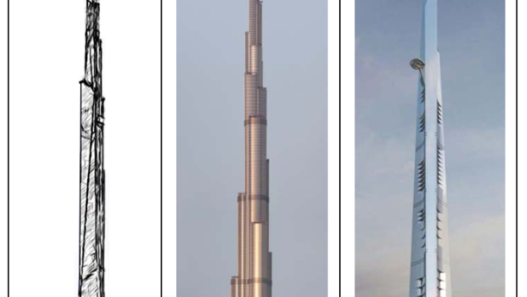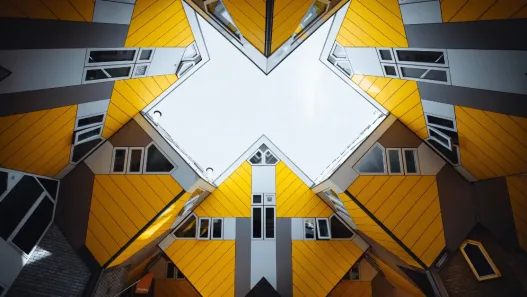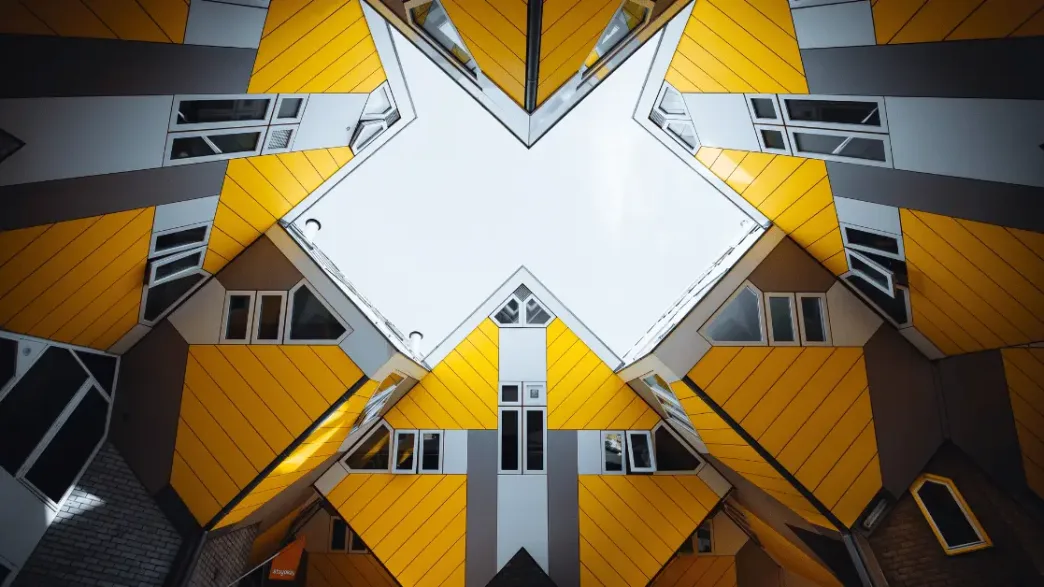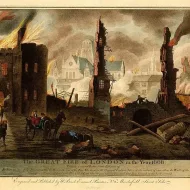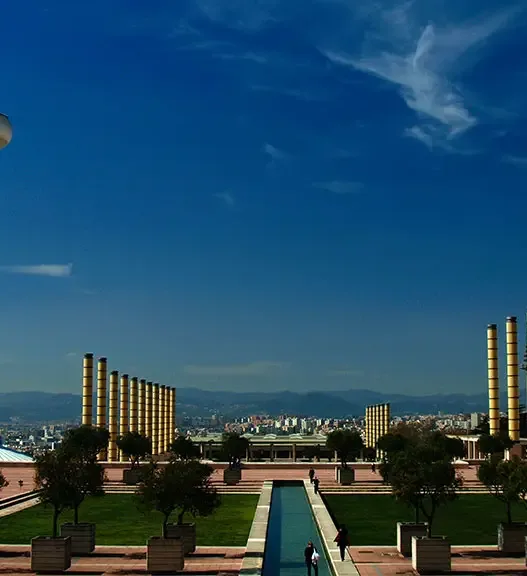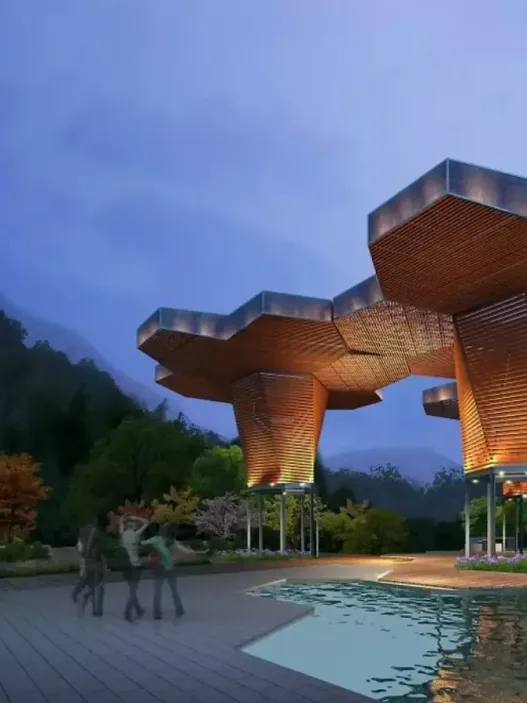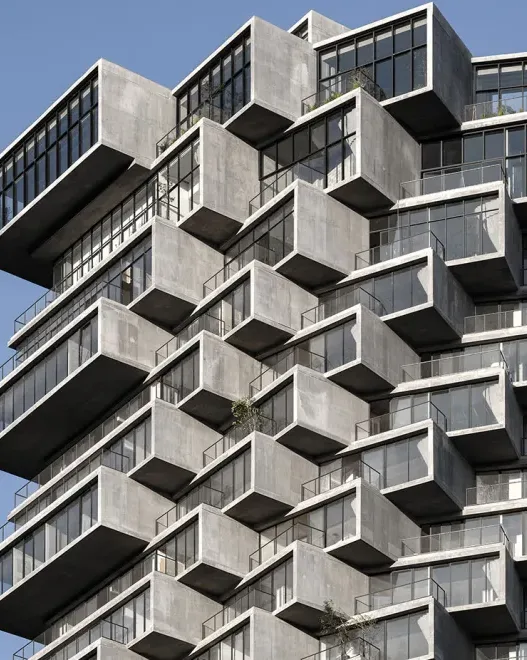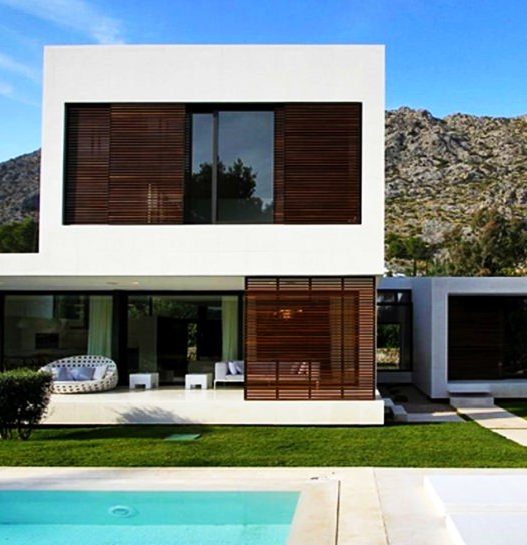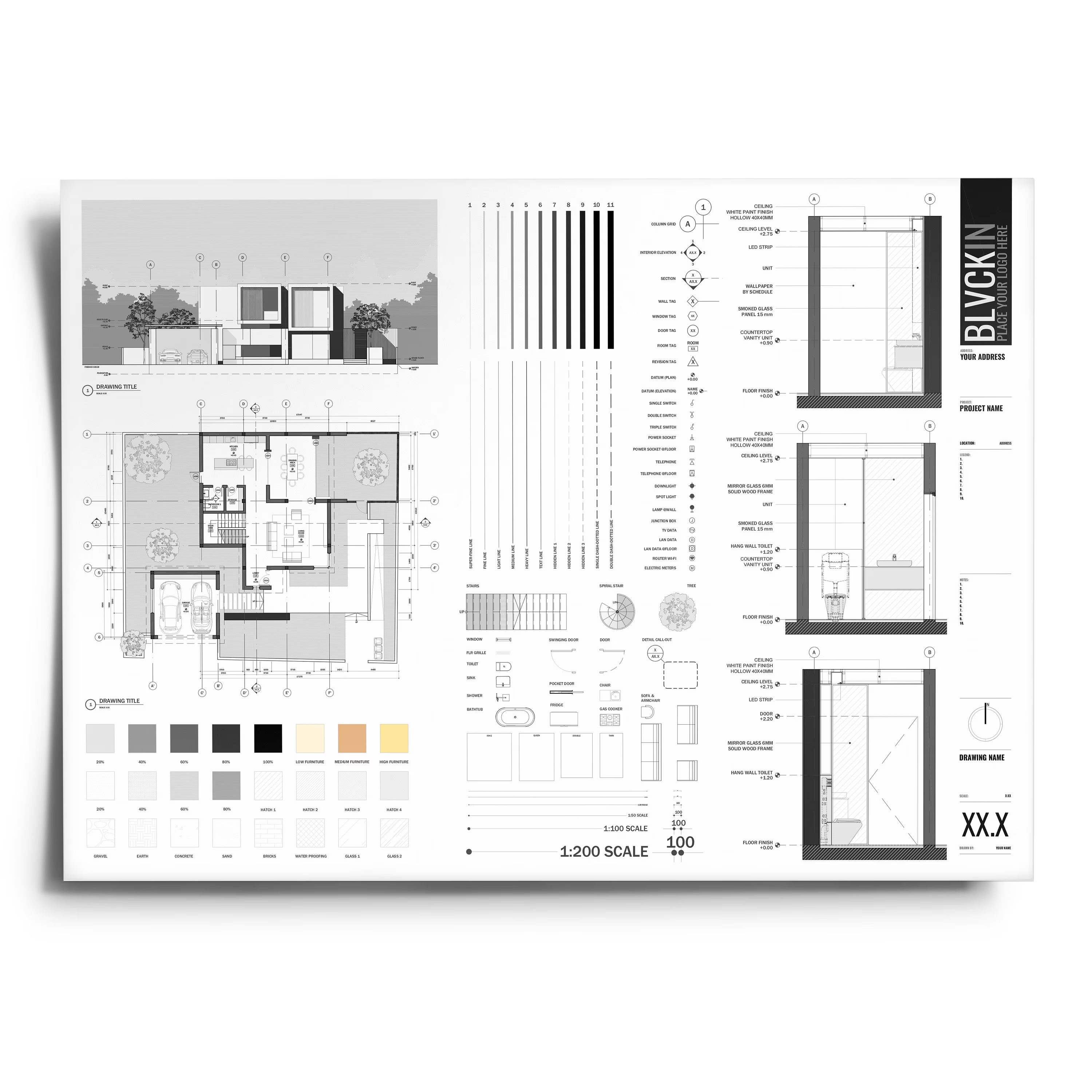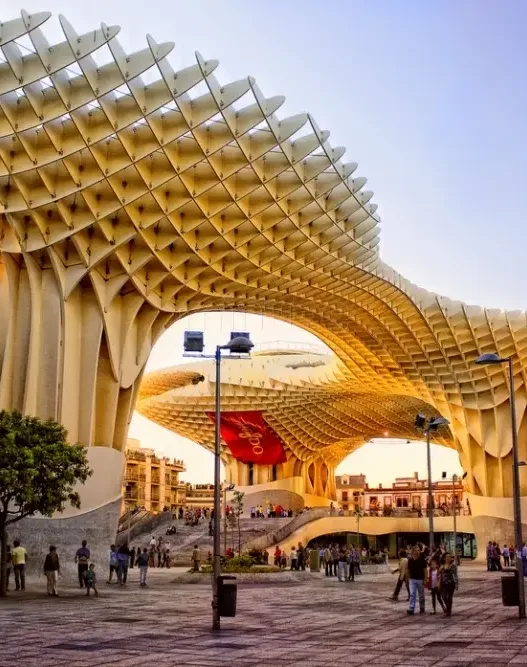Art and architecture have a long and intertwined history, each influencing and inspiring the other. This dynamic relationship has shaped the way we perceive and experience the world around us. From Ancient Greece to the Renaissance to modernism, art and architecture have evolved and transformed, leaving an indelible mark on our cultural landscape.

Ancient Greeks Birthplace of Art and Architecture
The ancient Greeks are generally recognized as pioneers of both art and architecture. Their contributions to these fields laid the foundation for centuries of artistic and architectural development. Greek art and architecture were characterized by a focus on balance, harmony and proportion. The Greeks believed that beauty and aesthetics were fundamental elements of life and sought to create works that embodied these principles.
One of the most iconic examples of Greek architecture is the Parthenon, a temple dedicated to the goddess Athena. Built in the 5th century BC, the Parthenon is a testament to the Greeks’ mastery of architectural design. Its symmetrical proportions and intricate details showcase the skill and craftsmanship of ancient Greek architects.
Greek art, on the other hand, encompassed a wide range of media, including sculpture, pottery and painting. The Greeks were known for their realistic and idealized representations of the human form, as seen in sculptures such as the famous Venus de Milo and Discobolus. These works of art not only reflected the physical beauty of the human body, but also conveyed a sense of movement and emotion.
Renaissance The Revival of Classical Art and Architecture
The Renaissance was a period of rebirth and revival of classical art and architecture. It emerged in Europe between the 14th and 17th centuries and led to a renewed interest in the aesthetics and ideals of Ancient Greece and Rome. Renaissance artists and architects sought to emulate the beauty and harmony found in classical works, while also incorporating their own innovations and interpretations.
One of the most influential figures of the Renaissance was Leonardo da Vinci. His works such as the Mona Lisa and The Last Supper exemplify the technical mastery and attention to detail that defined the period. Renaissance architecture is best represented by buildings such as Florence Cathedral and St. Peter’s Basilica in Rome. These buildings demonstrated the use of mathematical principles such as proportion and perspective to create harmonious and awe-inspiring spaces.
The Renaissance marked a significant shift in the relationship between art and architecture. Although artists and architects were still intertwined, they began to explore their disciplines more independently. This separation allowed for more experimentation and innovation in both fields, leading to the emergence of new artistic movements and architectural styles.
Modernism Separation of Art and Architecture
The 20th century brought a radical break with the traditional relationship between art and architecture. The modernist movement, which emerged in the early 1900s, sought to break free from the constraints of historical styles and embrace new forms of expression. This shift resulted in the separation of art and architecture as distinct disciplines, each with its own characteristics and goals.
Modernist architecture rejected ornamentation and embraced simplicity, functionality and the use of new materials and construction techniques. Architects such as Le Corbusier and Frank Lloyd Wright pioneered this movement, designing buildings that prioritized efficiency and reflected the changing needs of society. The Bauhaus school, founded by Walter Gropius, further emphasized the integration of art and architecture, promoting the idea of the “total work of art” in which all elements of design are combined.
In the field of art, modernism gave rise to various movements such as Cubism, Surrealism and Abstract Expressionism. Artists such as Pablo Picasso, Salvador Dali and Jackson Pollock pushed the boundaries of traditional art forms and experimented with new techniques and concepts. The separation of art and architecture allowed for greater artistic freedom and exploration, leading to innovative and thought-provoking works.
The Impact of Art on Architecture
Art has always played an important role in shaping architectural design. Architects are inspired by various artistic movements and incorporate elements of art into their buildings. This effect can be seen in the use of color, form, texture and even the overall concept and theme of a building.
Artistic Expression in Architectural Design
Architects often use their buildings as a means of artistic expression. They create spaces that evoke emotions, tell stories and stimulate the senses. Just as a painting or sculpture can evoke a reaction in its viewers, architecture has the power to evoke a reaction in those who experience it.
The Guggenheim Museum in Bilbao, Spain, designed by Frank Gehry, is an example of this. The unique and unusual design of the museum, resembling a flowing sculpture, has become an iconic symbol of modern architecture. The use of curves, angles and reflective materials creates a visually striking and dynamic structure that captures the attention of visitors. The Guggenheim Museum is not only a functional space for the exhibition of art, but also a work of art in itself.
Artistic Elements in Architectural Details
Artistic elements can also be found in smaller details of architectural design. Ornamental motifs, intricate carvings and decorative patterns are often incorporated into the facades, ceilings and interiors of buildings. These elements add visual interest and create a sense of craftsmanship and beauty.
For example, the intricate stone carvings on the facade of Notre-Dame Cathedral in Paris are a testament to the skill and artistry of the craftsmen who built it. Delicate details and intricate patterns tell stories and convey religious symbolism, adding depth and meaning to architectural design.
Art as an Inspiration for Architectural Concepts
Artistic movements and styles have often been a source of inspiration for architectural concepts and designs. Architects can draw on the principles and aesthetics of a particular art movement to create buildings that reflect their ideals and values.
For example, the Art Nouveau movement influenced architectural design in the late 19th and early 20th centuries. Characterized by organic forms, flowing lines and decorative motifs inspired by nature, Art Nouveau architecture sought to create a harmonious and visually pleasing environment. Architect Antoni Gaudi’s works, such as the Sagrada Familia in Barcelona, exemplify the integration of art and architecture in the Art Nouveau style.
Collaborations between Artists and Architects
In some cases, artists and architects collaborate directly to create integrated works of art and architecture. These collaborations blur the boundaries between the two disciplines and result in unique and immersive experiences for audiences.
The Walt Disney Concert Hall in Los Angeles, designed by architect Frank Gehry in collaboration with artist Lita Albuquerque, is an example of this collaboration. The exterior of the concert hall features a large-scale mural created by Albuquerque that complements Gehry’s distinctive architectural design. The integration of art and architecture in this project blurs the lines between the two disciplines, creating a cohesive and immersive experience for visitors.
The Impact of Architecture on Art
Architecture has also had a profound impact on the art world. The design and structure of buildings can influence the creation and presentation of artworks, shaping the way they are perceived and experienced.
Architecture as a Canvas for Art
Architecture provides a physical canvas for artists to display their work. Murals, sculptures and installations can be integrated into architectural design, transforming buildings into works of art.
For example, the street art movement has used the surfaces of buildings as a medium for artistic expression. Graffiti artists paint large-scale murals on the walls of urban buildings, transforming them into vibrant and dynamic works of art. These murals not only beautify the urban landscape, but also function as a kind of social and political commentary.
Architecture as a Medium for Art
The design of a building can also influence the way artworks are displayed and experienced. Museums and galleries carefully consider architectural layout and lighting to create an optimal environment for viewing art.
The Guggenheim Museum in New York, designed by architect Frank Lloyd Wright, is a prime example of how architecture can enhance the viewing experience. The museum’s unique spiral design allows for a constant flow of movement, guiding visitors through the collection in a seamless and immersive way. The natural light filtering through the skylights and the open atrium create a harmonious and inviting space for art appreciation.
Architecture as Inspiration for Artistic Themes
Architectural structures and spaces can inspire artists to explore certain themes and concepts in their work. The shapes, forms and textures found in buildings can evoke emotions and stimulate the imagination, leading to the creation of artworks that capture the essence of architecture.
The paintings of Dutch artist Piet Mondrian, for example, were heavily influenced by the grid-like patterns and geometric shapes of modernist architecture. Mondrian’s compositions, characterized by bold lines and primary colors, reflect the simplicity and order found in architectural design.
The Future of Art and Architecture
As we move into the future, the relationship between art and architecture continues to evolve and adapt. New technologies, materials and design approaches offer endless possibilities for creative exploration and collaboration.
Technological Advances in Architecture
Advances in technology have revolutionized the field of architecture, enabling the creation of innovative and sustainable buildings. Digital design tools such as computer-aided design (CAD) software enable architects to visualize and simulate their designs in three dimensions, increasing the precision and efficiency of the design process.
Furthermore, the integration of smart technologies and sustainable practices into architecture has become increasingly important. Buildings are now being designed with energy-efficient systems, renewable materials and smart automation, creating spaces that are not only aesthetically pleasing but also environmentally friendly.
Bauhaus Movement: The Marriage of Art and Technology
The Bauhaus movement of the early twentieth century was a revolutionary approach to the intersection of art and architecture. Founded by Walter Gropius in Weimar, Germany in 1919, the Bauhaus school aimed to break down the barriers between different art disciplines and unite them into a harmonious whole.
Birth of Bauhaus
The Bauhaus movement was born out of a desire to create a new aesthetic reflecting the modern age. It sought to combine traditional craftsmanship with industrial production techniques, valuing the artistic process while embracing the advances of technology. The school fostered a collaborative and interdisciplinary environment, bringing together artists, architects and designers from diverse backgrounds.
Bauhaus Manifesto
At the core of the Bauhaus movement was the belief that art and architecture should serve a social purpose. The Bauhaus manifesto, written by Walter Gropius, outlined the principles of the movement, emphasizing the importance of functionality, simplicity and the integration of art into everyday life. The manifesto called for a new approach to design that would be accessible to everyone, regardless of social class or wealth.
Bauhaus Heritage
The influence of the Bauhaus movement is still felt today. Its emphasis on the unity of art and technology formed the basis of modern design principles. Many of the ideas and concepts developed in the Bauhaus school, such as the use of clean lines, geometric forms and the integration of art into architecture, have become fundamental elements of contemporary design.
The Art of Architecture: The Rise of Installation Art
In recent years, the boundaries between art and architecture have become increasingly blurred and a new form of artistic expression known as installation art has emerged. Installation art is a medium that brings together elements of sculpture, architecture and performance to create immersive and interactive experiences for the viewer.
Definition of Installation Art
Installation art is characterized by its site-specific nature and its ability to transform the viewer’s perception of space. Unlike traditional art forms, which are usually exhibited in galleries or museums, installation art is often created in response to a specific place or environment. It can take many forms, from large-scale installations that cover entire rooms to smaller, more intimate pieces that interact with the surrounding architecture.
Integration of Art and Architecture
One of the most important aspects of installation art is its integration with the architectural space in which it is created. When designing their installations, artists often consider the physical characteristics of the space, such as its size, shape and materials. By incorporating elements of existing architecture, installation art blurs the boundaries between art and the built environment, creating a unique and immersive experience for the viewer.
The Impact of Installation Art
Installation art has had a profound impact on the art world by challenging traditional notions of what art is and how it should be experienced. By breaking free from the confines of the gallery space, installation artists have had the freedom to create works that interact with the viewer on a physical and emotional level. This has created new possibilities for artistic expression and encouraged a more interactive and participatory approach to art.
Architectural Art of the 21st Century: The Blurring of Boundaries
In the 21st century, the boundaries between art and architecture continue to blur as artists and architects explore new ways of combining the two disciplines. This has led to innovative and boundary-pushing architectural designs that challenge traditional notions of what buildings should look like and how they should function.
The Rise of Parametric Design
Parametric design is a cutting-edge approach to architecture that uses algorithms and computational tools to produce complex and organic forms. By harnessing the power of technology, architects can create buildings that are not only aesthetically stunning but also highly functional. Parametric design pushes the boundaries of what is possible in architectural design, allowing optimization of building performance, energy efficiency and structural integrity.
Integration of Sustainability
In recent years, there has been an increasing emphasis on sustainability in architectural design. Architects are increasingly incorporating eco-friendly practices and materials into their designs, aiming to create buildings with minimal impact on the environment. This integration of sustainability into architectural art not only promotes a more sustainable future, but also challenges traditional notions of what constitutes beauty in architecture.
Fusion of Art and Technology
Advances in technology have also played an important role in blurring the boundaries between art and architecture. Architects can now incorporate digital technologies such as virtual reality and augmented reality into their designs, creating immersive and interactive experiences for the viewer. This combination of art and technology not only enhances the aesthetic experience, but also opens up new possibilities in architectural design.
The Role of Art in Architecture
Art and architecture have long been intertwined, with artists and architects collaborating to create spaces that are not only functional but also visually captivating. In modern times, the role of art in architecture has expanded, going beyond mere decoration to play a vital role in enhancing the urban experience, incorporating aesthetics and functionality into building design, and challenging traditional forms and functions.
Using Art in Public Spaces: Enhancing the Urban Experience
Art has the power to transform public spaces, turning them into vibrant and engaging environments that enhance the urban experience. From large-scale sculptures and murals to interactive installations, public art can create a sense of place, encourage community engagement and support cultural identity. By integrating art into public spaces, architects can create a more visually appealing and dynamic urban landscape, invite people to interact with their surroundings, and foster a sense of community pride and ownership.
Incorporating Art into Building Design: Aesthetics and Functionality
Incorporating art into building design goes beyond just aesthetics; it can also enhance functionality and create a harmonious relationship between the built environment and its occupants. Architects often collaborate with artists to integrate elements of art into the design of buildings, such as decorative facades, intricate patterns and innovative use of materials. These artistic elements not only create visual interest, but also serve practical purposes, such as providing shade, improving acoustics or creating a sense of privacy. Integrating art into building design allows for a more holistic approach to architecture, where aesthetics and functionality are seamlessly intertwined.
The Impact of Art on Architecture: Challenging Traditional Forms and Functions
Art has the power to challenge traditional forms and functions in architecture, pushing the boundaries of what is considered possible or acceptable. Artists and architects often collaborate to create unconventional and thought-provoking structures that challenge conventional norms. These architectural works become statements in their own right, challenging the viewer’s perception of space, form and function. By incorporating art into architecture, architects can break free from the constraints of tradition and create spaces that inspire and provoke dialog.
Studies on Art and Architecture Collaborations
Art and architecture collaborations have resulted in some of the most iconic and groundbreaking buildings in history. When artists and architects come together, their combined creativity and vision can produce works that transcend the boundaries of traditional design. In this section, we will examine three important case studies of collaborations between renowned architects and artists: The collaboration between Le Corbusier and Diego Rivera, Frank Lloyd Wright and Georgia O’Keeffe, and Zaha Hadid and Anish Kapoor.
Collaboration between Le Corbusier and Diego Rivera
Le Corbusier, one of the pioneers of modern architecture, and Diego Rivera, the renowned Mexican muralist, collaborated on many projects in the early 20th century. One of their most important collaborations was the Ministry of Education Building in Mexico City. While Le Corbusier designed the building, Rivera painted a series of striking murals that adorned its walls. Depicting scenes from Mexican history and culture, the murals add storytelling and cultural significance to the architectural space. This collaboration demonstrated how art and architecture can come together to create a cohesive and immersive experience for a building’s residents and visitors.
Collaboration between Frank Lloyd Wright and Georgia O’Keeffe
American architect Frank Lloyd Wright, known for his organic architectural style, collaborated with renowned American artist Georgia O’Keeffe on the design of Ghost Ranch in New Mexico. While Wright designed the buildings, O’Keeffe contributed her artistic vision to the interiors. This collaboration resulted in a harmonious blend of architecture and art, blurring the lines between the two disciplines. O’Keeffe’s paintings and sculptures became an integral part of the overall design, seamlessly integrating art and architecture. This collaboration exemplified how art can enhance the spatial experience and create a sense of unity between the built environment and artistic expression.
Collaboration between Zaha Hadid and Anish Kapoor
Zaha Hadid, the visionary architect known for her avant-garde designs, has collaborated with British sculptor Anish Kapoor on many projects. One of these important collaborations was the design of the MAXXI National Museum of 21st Century Arts in Rome. While Hadid’s architectural design provided a dynamic and fluid space, Kapoor’s sculpture “Leviathan” became the centerpiece of the museum. With its reflective surfaces and complex forms, the sculpture interacts with the architectural elements to create a visually captivating and immersive experience for visitors. This collaboration showcased the power of art and architecture to create spaces that challenge traditional notions and stimulate the senses.
Challenges and Opportunities of Art and Architecture Collaborations
Collaborations between artists and architects in the field of art and architecture present both challenges and opportunities. While integrating art with architectural design can create innovative and visually stunning spaces, it also requires careful coordination and a deep understanding of both disciplines. In this section, we explore the challenges of integrating art and architecture, the opportunities that collaborations offer, and the endless possibilities for the future of art and architecture collaborations.
Challenges of Integrating Art and Architecture
Integrating art and architecture is not without its challenges. Collaboration between artists and architects requires a delicate balance between artistic expression and functional design. Here are some of the challenges that arise:
- Communication and Coordination: Artists and architects often have different vocabularies and ways of thinking. Bridging these two disciplines requires effective communication and coordination to ensure that the artistic vision is aligned with architectural requirements.
- Budget and Resources: Integrating art into architectural design can be costly. Artists may require materials, equipment and expertise that go beyond the typical architectural budget. It can be difficult to balance artistic aspirations with financial constraints.
- Technical Limitations: Artists can have grand artistic visions that push the limits of what is technically possible. Architects must find innovative solutions to translate these visions into practical and structurally sound designs.
- Maintenance and Durability: Artistic elements integrated into architectural spaces must withstand the test of time and daily wear and tear. Finding materials and techniques that can maintain the integrity of the artwork while ensuring its longevity can be challenging.
Opportunities for Collaboration: Creating Something Greater Than the Sum of Its Parts
Despite the challenges, collaborations between artists and architects offer countless opportunities to create something greater than the sum of its parts. Here are some of the opportunities that arise from these collaborations:
- Enhanced Aesthetic Appeal: The integration of art into architectural design can elevate the aesthetic appeal of a space, creating visually captivating and emotionally engaging environments. Artistic elements can add depth, texture and color, transforming a building into a work of art.
- Storytelling and Cultural Significance: Artistic elements can tell stories, evoke emotions and celebrate cultural heritage. Collaborations between artists and architects offer the opportunity to add narratives and cultural significance to architectural spaces, creating a more immersive and meaningful experience for users.
- Spatial Experience and User Interaction: Artistic elements can enhance the spatial experience and stimulate users’ senses. Sculptures, murals and installations can create focal points, guide movement and evoke a sense of wonder, making the space more memorable and enjoyable.
- Innovation and Experimentation: Collaborations between artists and architects encourage innovation and experimentation. Artists often bring fresh perspectives and unconventional thinking to architectural projects, pushing the boundaries of design and inspiring new approaches.
- Interdisciplinary Learning: Collaborations provide an opportunity for artists and architects to learn from each other’s disciplines. Architects can gain insights into artistic expression and creativity, while artists can learn about spatial design and functionality. This interdisciplinary learning enriches both fields and fosters a culture of collaboration and discovery.
The Future of Art and Architecture Collaborations: Infinite Possibilities
The future of art and architecture collaborations holds endless possibilities. As technology advances and borders continue to blur, collaborations between artists and architects will become even more common and transformative. Here are some of the potential future developments:
- Digital Integration: The integration of digital technologies such as augmented reality and interactive installations will open new avenues for artistic expression in architectural spaces. Virtual and immersive experiences will become more common, creating dynamic and ever-changing environments.
- Sustainability and Eco-conscious Design: Collaborations between artists and architects will increasingly focus on sustainability and eco-conscious design. Artistic elements will not only enhance the aesthetic appeal of a space, but also contribute to its environmental performance, such as integrating renewable energy systems or using recycled materials.
- Community Engagement and Social Impact: Collaborations will extend beyond the physical boundaries of a building, focusing on community engagement and social impact. Artists and architects will work together to create public art installations, urban interventions and community-oriented projects that promote inclusivity, cultural exchange and social change.
- Cross-Cultural Collaborations: As the world becomes more interconnected, collaborations between artists and architects from different cultures and backgrounds will become more common. These collaborations will result in designs that celebrate diversity, encourage cultural exchange and challenge traditional notions of architecture and art.
- Experimental Materials and Techniques: Collaborations will continue to push the boundaries of materials and techniques, resulting in innovative and unconventional designs. Artists and architects will explore new materials such as smart materials or bio-based materials and experiment with production techniques such as 3D printing or parametric design.
Conclusion
As a result, the intersection of art and architecture is fertile ground for creativity and innovation. Collaborations between artists and architects present both challenges and opportunities, but the potential to create something greater than the sum of its parts is enormous. By integrating art into architectural design, we can enhance the aesthetic appeal of spaces, tell stories, engage users and push the boundaries of design.
The challenges of integrating art and architecture, such as communication and coordination, budget constraints, technical limitations and maintenance considerations, require careful consideration. However, the opportunities offered by collaborations outweigh these challenges. Through collaboration we can create visually captivating and emotionally engaging environments, add narratives and cultural significance to architectural spaces, enhance the spatial experience, and encourage innovation and experimentation.
Looking to the future, the possibilities for art and architecture collaborations are endless. As technology continues to advance, we can expect digital integration, sustainability and environmentally conscious design, community engagement and social impact, cross-cultural collaborations, and the exploration of experimental materials and techniques. These developments will shape the future of art and architecture, creating dynamic and inclusive spaces that inspire and transform.
On this bright and exciting horizon, collaboration will remain a key driver of progress. By breaking down the boundaries between art and architecture, artists and architects can continue to push the boundaries of what is possible. By embracing collaboration, we can create spaces that not only serve their functional purpose, but also evoke emotions, tell stories and leave a lasting impression on those who experience them.
The intersection of art and architecture is a space of endless possibilities. It is where creativity, innovation and human expression come together to shape the built environment. As we move forward, let’s embrace the power of collaboration and continue to explore the limitless potential of art and architecture.
Frequently Asked Questions (FAQ)
What is the importance of collaborations between artists and architects in architecture?
Collaborations between artists and architects in the field of architecture are important because they bring together different perspectives and expertise to create unique and innovative designs. Artists bring a creative and expressive vision to the table, while architects bring technical knowledge and understanding of spatial design. The collaboration between the two disciplines allows for the creation of spaces that not only fulfill functional requirements, but also inspire and stimulate the human spirit. It blurs the boundaries between art and architecture, creating a harmonious relationship that enhances the overall aesthetic experience.
How do collaborations between artists and architects influence the design process?
Collaborations between artists and architects influence the design process by introducing new ideas, concepts and approaches. Artists often bring a fresh perspective and unconventional way of thinking to architectural projects, challenging the architect’s preconceived ideas and pushing the boundaries of what is possible. The exchange of ideas and the integration of artistic elements into the design process can lead to more innovative and visually stunning solutions. Collaborations also encourage a sense of experimentation and discovery, allowing the creation of spaces that are not only functional but also emotionally and intellectually stimulating.
What are the benefits of integrating art into architectural design?
Integrating art into architectural design has several benefits. First, it increases the visual appeal of the built environment, creating visually captivating and engaging spaces. Artistic elements can add storytelling, cultural significance or emotional resonance to a building, creating a more immersive experience for occupants and visitors. Secondly, art can contribute to a building’s functionality by serving practical purposes such as improving acoustics, providing shade or creating a sense of privacy. Finally, the integration of art into architectural design allows for a more holistic approach where aesthetics and functionality are seamlessly intertwined, resulting in spaces that are both visually pleasing and highly functional.
How do collaborations between artists and architects affect the overall user experience?
Collaborations between artists and architects have a significant impact on the overall user experience of a space. The integration of art into architectural design creates a multi-sensory experience that stimulates and engages users. Artistic elements can stimulate emotions, arouse curiosity and create a sense of wonder, making the space more memorable and enjoyable. Collaboration between artists and architects often results in the creation of unique and thought-provoking spaces that go beyond the ordinary and leave a lasting impression on users. Whether using live murals, sculptural installations or interactive artworks, the integration of art into architectural design adds an extra depth and richness to the user experience.
How can collaborations between artists and architects inspire the next generation of designers?
Collaborations between artists and architects are a source of inspiration for the next generation of designers. They demonstrate the power of interdisciplinary collaboration and its potential to push the boundaries of design. Witnessing the successful integration of art and architecture, aspiring designers are encouraged to think outside the box, explore new possibilities and challenge traditional norms. These collaborations show that creativity knows no boundaries and that the fusion of different disciplines can lead to groundbreaking and transformative designs. They inspire future designers to embrace experimentation, embrace collaboration and strive for innovation in their own work.
How does art enhance the urban experience in public spaces?
Art enriches the urban experience by transforming public spaces into visually captivating and engaging environments. Public artworks such as sculptures, murals and installations create a sense of place and encourage community engagement. They can also promote cultural identity and serve as a gathering point for the community. By integrating art into public spaces, architects create visually appealing and dynamic urban landscapes that invite people to interact with their surroundings and foster a sense of pride and ownership in the community.
What is the importance of incorporating art into building design?
Incorporating art into building design goes beyond aesthetics; it enhances functionality and creates a harmonious relationship between the built environment and its occupants. Artistic elements in building design, such as decorative facades, intricate patterns and innovative use of materials, not only add visual interest, but also serve practical purposes. They can provide shade, improve acoustics or create a sense of privacy. By integrating art into building design, architects take a holistic approach where aesthetics and functionality are seamlessly intertwined, creating visually stunning and highly functional spaces.
How does art challenge traditional forms and functions in architecture?
Art has the power to challenge traditional form and function in architecture by pushing the boundaries of what is considered possible or acceptable. Artists and architects often collaborate to create unconventional and thought-provoking structures that challenge conventional norms. These architectural works become statements in their own right, challenging the viewer’s perception of space, form and function. By incorporating art into architecture, architects can break free from the constraints of convention and create spaces that inspire and provoke dialog, challenging traditional notions of what buildings should look like and how they should function.
How can art contribute to sustainable architecture?
Art can contribute to sustainable architecture by promoting environmentally responsible design principles. Artists and architects can collaborate to incorporate sustainable materials and practices into their projects and create buildings with minimal impact on the environment. Artistic elements can also be used to raise awareness of sustainability issues and inspire behavior change. By integrating art into sustainable architecture, architects can create visually stunning spaces that not only function efficiently, but also contribute to a more sustainable future.
How does the integration of art and architecture affect the overall aesthetic experience?
The integration of art and architecture enhances the overall aesthetic experience by creating visually captivating and immersive spaces. When art is seamlessly integrated into architectural design, it becomes an integral part of the built environment, enhancing visual appeal and creating a sense of harmony. The combination of artistic elements such as sculptures, installations or decorative features with architectural design elements creates a dynamic and engaging aesthetic experience for the viewer. It blurs the lines between art and architecture, creating a harmonious and visually stimulating environment.
What is the importance of the Bauhaus movement in art and architecture?
The Bauhaus movement was important in art and architecture because it revolutionized the way we think about design. Emphasizing the integration of art and technology, the Bauhaus principles of functionality and simplicity continue to influence contemporary design. By bringing together artists, architects and designers from various disciplines, the Bauhaus school encouraged a collaborative and interdisciplinary approach to creativity.
How does installation art challenge traditional notions of art and architecture?
Installation art challenges traditional notions of art and architecture by breaking free from the confines of the gallery space and interacting with the surrounding architecture. It blurs the boundaries between art and the built environment, creating immersive and interactive experiences for the viewer. Installation artists often incorporate elements of existing architecture into their work, transforming the viewer’s perception of space and challenging traditional forms of artistic expression.
What is parametric design and how does it push the boundaries of architectural design?
Parametric design is an innovative architectural approach that uses algorithms and computational tools to produce complex and organic forms. It allows architects to create buildings that are not only aesthetically stunning, but also highly functional. Parametric design pushes the boundaries of architectural design by harnessing the power of technology to optimize building performance, energy efficiency and structural integrity. It opens up new possibilities for architectural expression and challenges traditional notions of how buildings should look.
How does the integration of sustainability affect architectural design?
The integration of sustainability into architectural design has a significant impact on the field. Architects are increasingly incorporating environmentally friendly practices and materials into their designs, aiming to create buildings with minimal impact on the environment. This integration challenges traditional notions of beauty in architecture and promotes a more sustainable future. Sustainable design principles consider not only the environmental impact of a building, but also the well-being of its occupants, creating healthier and more efficient spaces.
How does the combination of art and technology enhance the architectural experience?
The combination of art and technology enhances the architectural experience by creating immersive and interactive environments for the viewer. By incorporating digital technologies such as virtual reality and augmented reality into their designs, architects can open up new possibilities for spatial exploration. This fusion of art and technology not only enhances the aesthetic experience, but also enables a deeper engagement with the architectural space. It blurs the boundaries between the physical and the virtual, creating a dynamic and multidimensional experience for the viewer.



